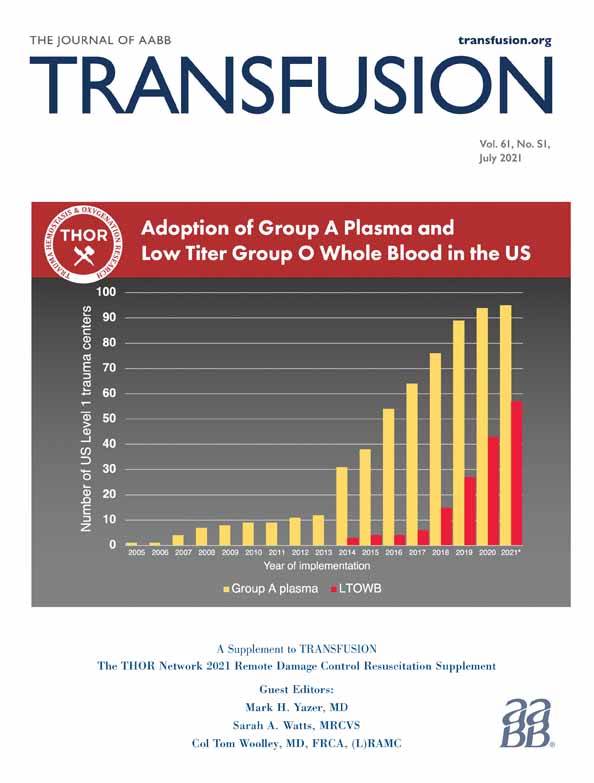Intraoperative blood transfusions in burn patients
Abstract
Background
Donated blood is a valuable and limited resource. Excision of burn wounds often leads to significant blood loss requiring transfusion. Accurately estimating blood loss is difficult, so examining the amount of blood products given intraoperatively is a clinically relevant way to measure utilization of this valuable resource. In this study, we examined the factors that influenced the amount of blood given intraoperatively during burn wound excisions.
Study Design and Methods
A retrospective analysis of patients admitted to a single burn center over 5 years who underwent excision of their burn wounds and received intraoperative blood products was performed. Patient and burn characteristics as well as pertinent surgical data and laboratory values on the day of surgery and postoperatively were gathered. A linear regression analysis examined factors influencing the number of units of products given and a predictive model was generated.
Results
A total of 563 operations performed on 166 patients were included. The amount of burn excised was the most influential variable on the amount of blood products given. Hemoglobin level, international normalized ratio, and platelet count on the day of surgery were associated with transfusion of different blood products. A predictive model was generated to aid in preoperative ordering of blood products.
Conclusion
The amount of burn excised and common hematology and coagulation lab values were associated with the amount of different blood products administered during burn surgery. The predictive model generated needs to be validated prospectively to aid in preoperative planning for burn excisions.
CONFLICT OF INTEREST
The authors have disclosed no conflicts of interest.




